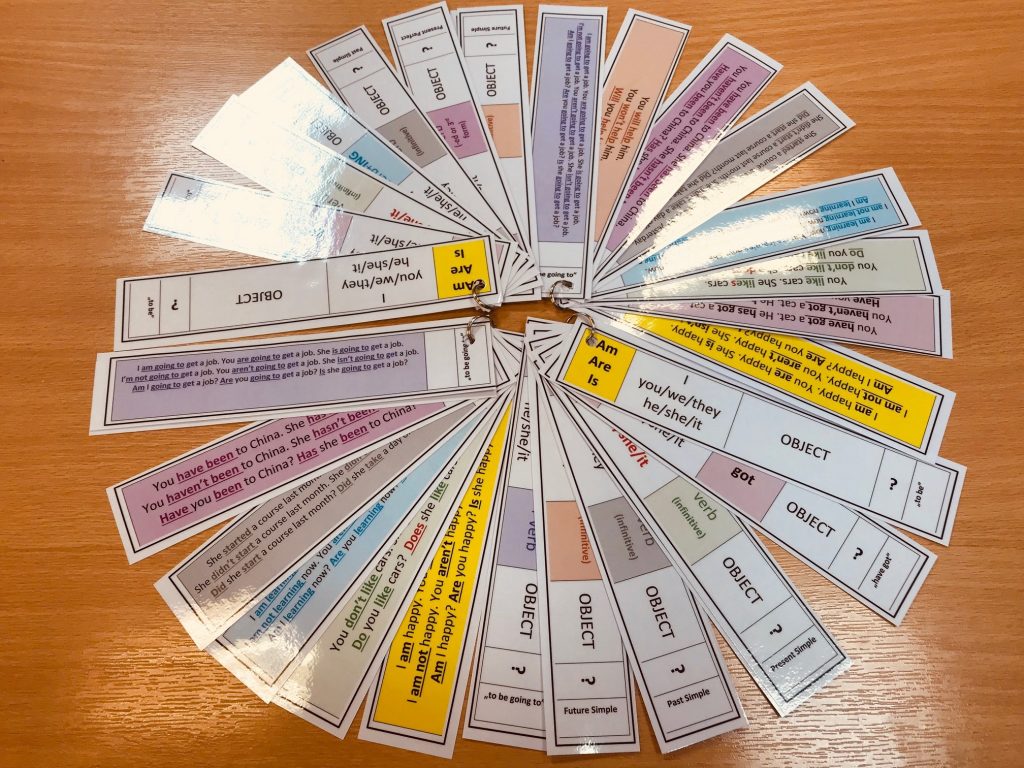You need to put something in the box to get something out. So put the structure in and have your students producing correct sentences J.
*“I cooking every day.”, *“like books he.”, *”I go play football.” – how many times do you hear these in your classroom? Our students make mistakes and our job is to correct them and help to improve. How to be more effective in improving fluency and accuracy, especially with low-level language learners?
This approach is best to be used when presenting a new grammar point, followed up by controlled grammar practice. It could also be a point of reference when students move to free practice. It provides students with a visual structure with boxes, at this stage not using formal descriptors such as subject or object.
Present Simple, affirmative sentences:
| I | get up | at 6am. |
| She | likes | sport. |
| We | work. | x |
Present Simple, question forms:
| x | Do | you | get up | at 6am? |
| Why | does | she | like | sport? |
| x | Do | we | work? | x |
When presenting a sentence or a question, allocate each of their parts into one box. There is usually the same number of boxes for each grammar point (eg. three for Present Simple affirmative). Some of the parts are obligatory, some are optional. Colour-coding all parts may be an additional factor helping students to differentiate each sentence part.
How can you incorporate this method in your lessons in an interactive way?
- Cut parts of sentences and ask students to put the cards in the correct boxes. Once checked, ask students to glue the cards. Click here to download.
- Provide the scaffolding (an empty table with relevant empty boxes) and ask students to write in their own sentences. Click here to download.
- Distribute a set of cards on a keyring and use it as a tool. When students do a speaking activity, ask them to check the forms when not sure. Click here to download. Print double-sided and laminate. I purchased the keyrings on Amazon.
- Create online quizzes, eg. using Kahoot.
- Students listen to the teacher saying incorrect sentences and have to correct the mistakes, writing the correct sentences down or saying them out loud.
All the way through the practice refer the students to their boxes and encourage self-corrections (asking eg. what they would put in the first/second/third box). Writing the incorrect sentences on the board can help here. Highlight the importance of completing all of the core boxes (ie. no jumping and leaving certain empty boxes allowed!).
There is also an alternative idea for blind and partially blind learners, applying tactile objects:
https://www.tes.com/news/tes-archive/tes-publication/how-i-teach-develop-a-feel-grammar-0
- Describe-a-picture-in-boxes
- Describe-a-room-in-boxes
- Print double-sided and laminate: Grammar-in-boxes-keyring







Add Comment